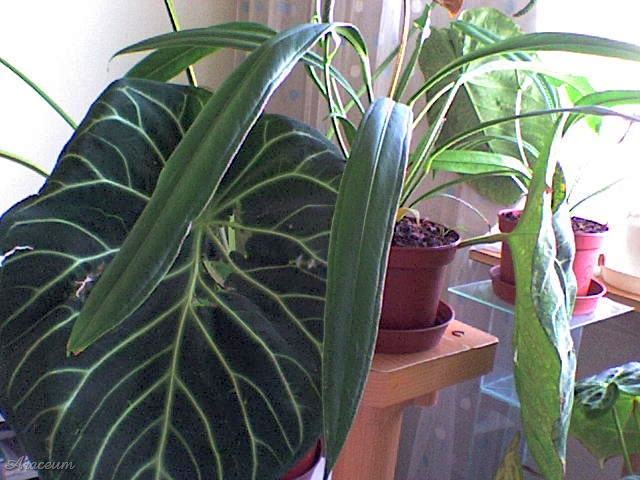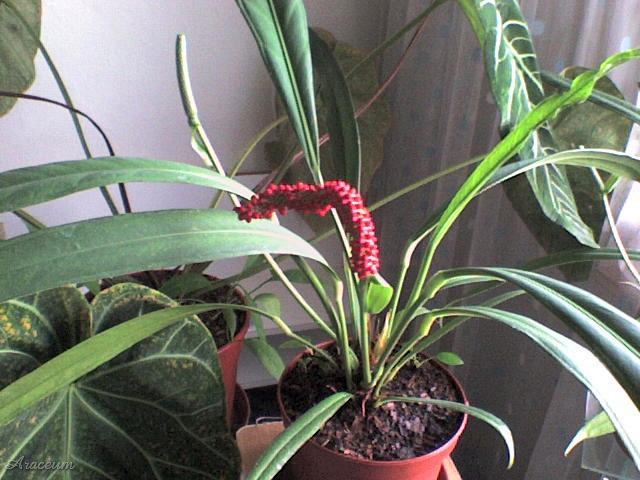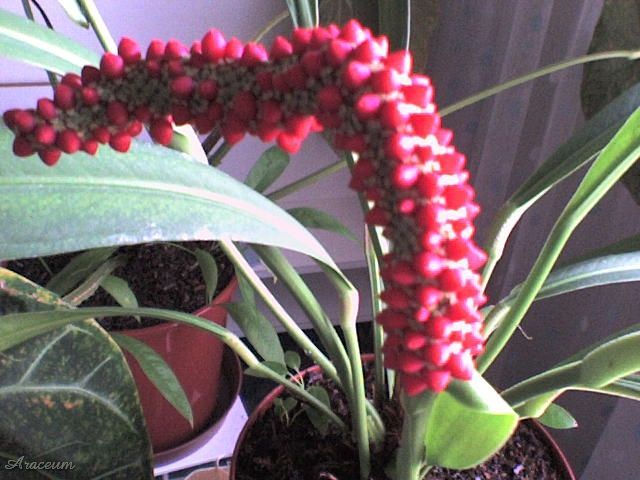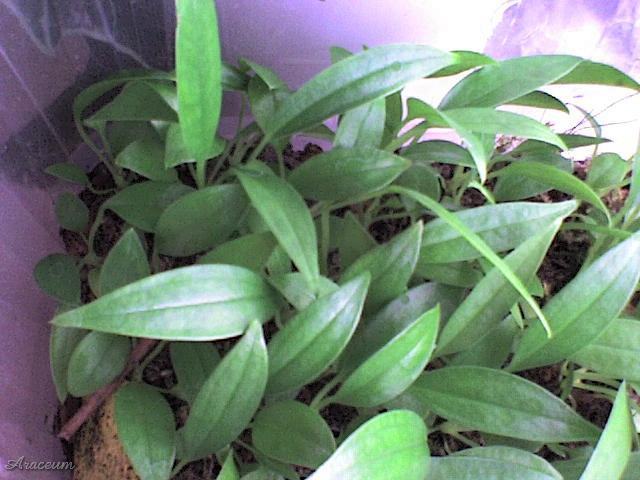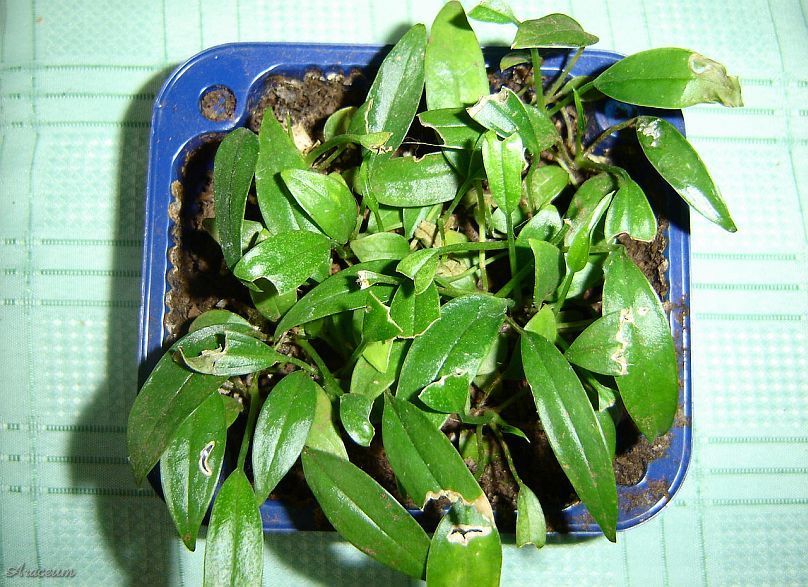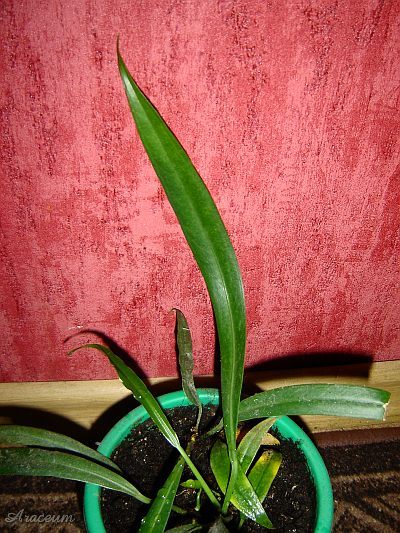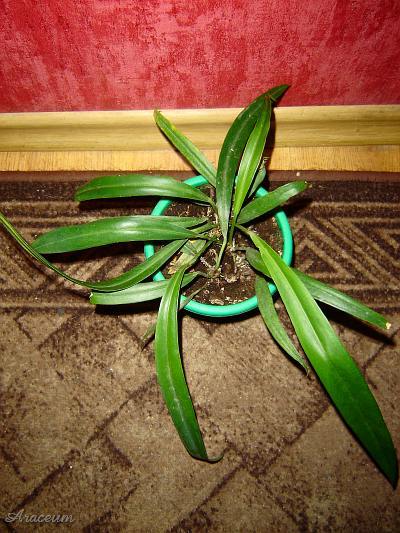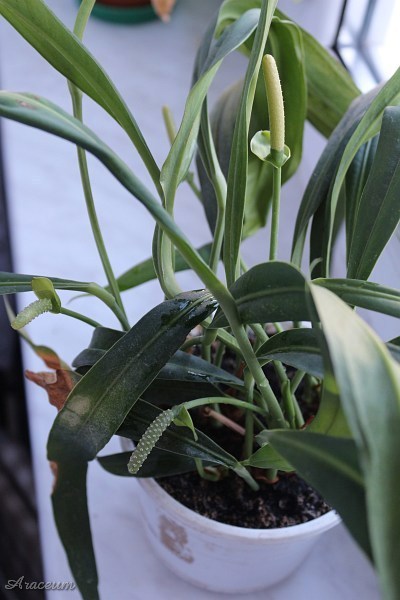 |  |
 | 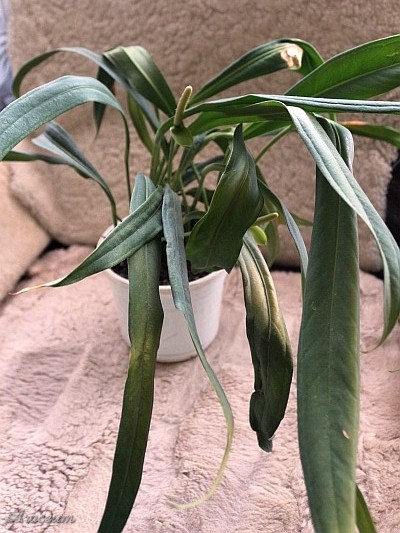 |
| An adult blooming plant. The leaf blades are 50-60 cm long. |
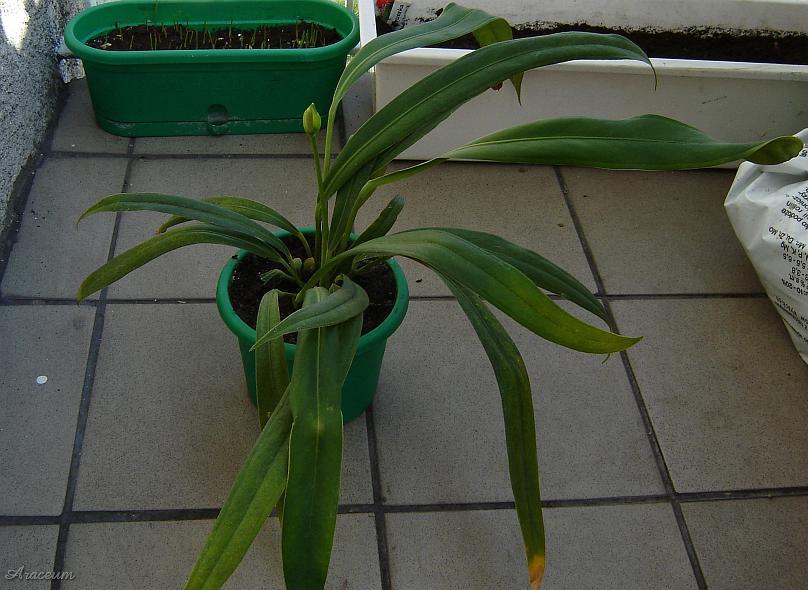 |
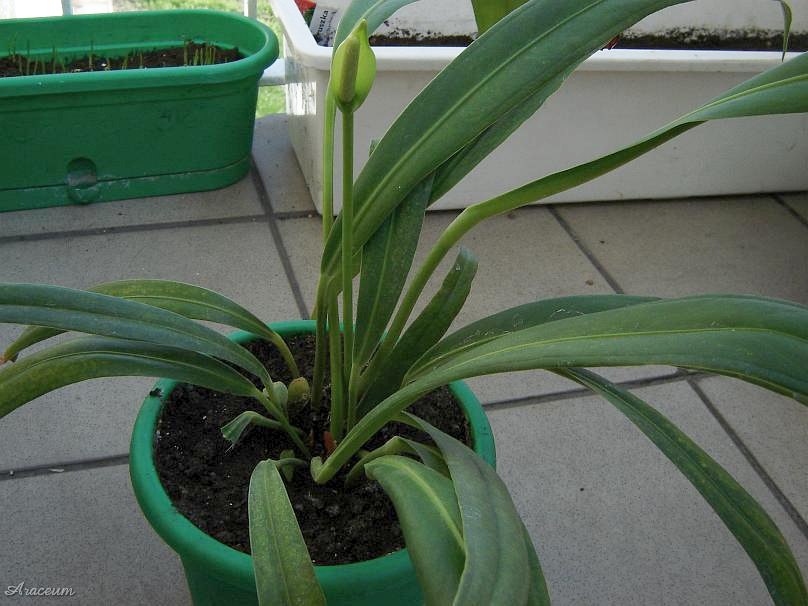 |
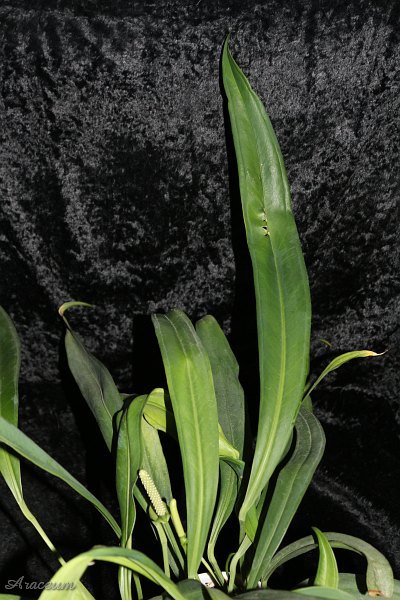 | 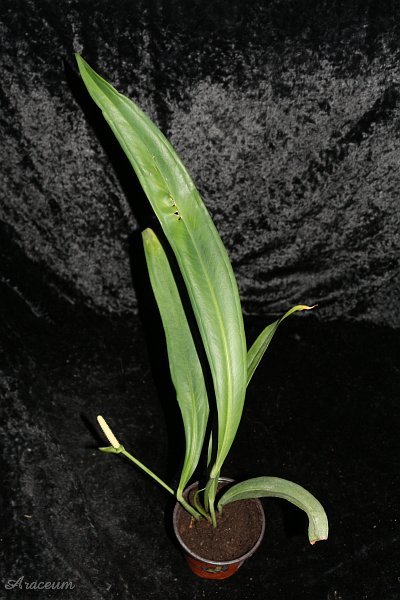 |
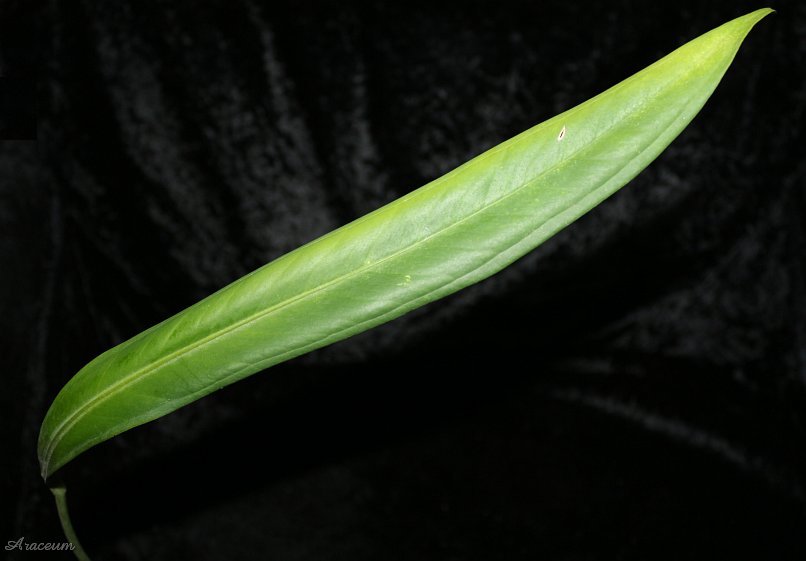 |
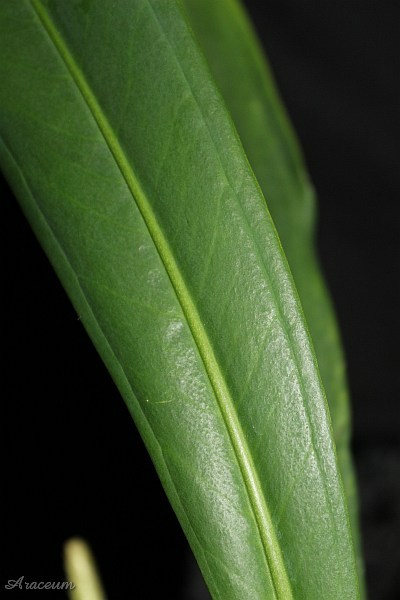 | 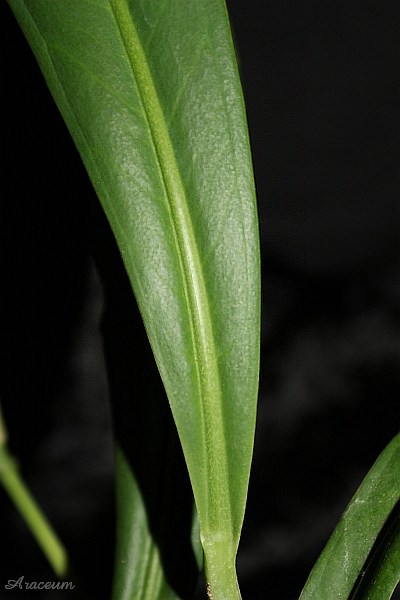 |
 | 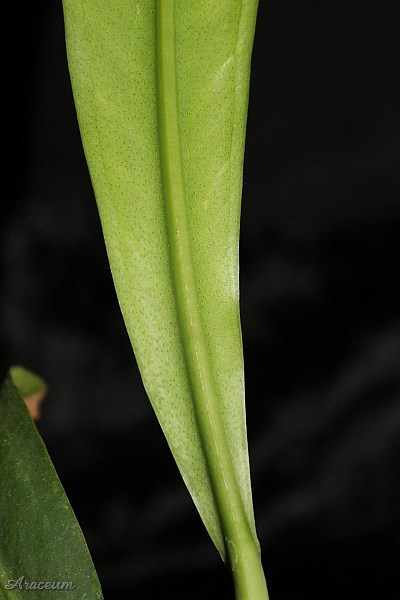 |
| These dark "dots" on the abaxial surface of the leaves are one of the distinguishing features of the section Porphyrochitonium. |
 |
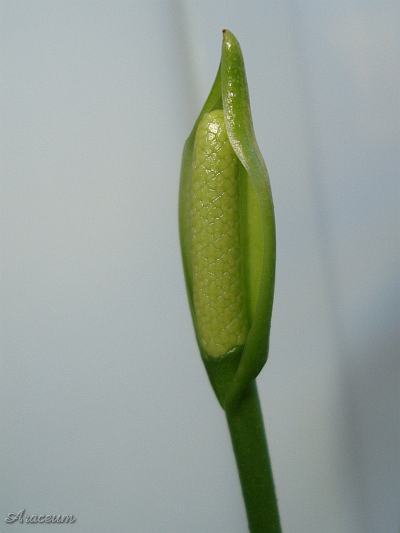 |  |
| Opening of an inflorescence. |
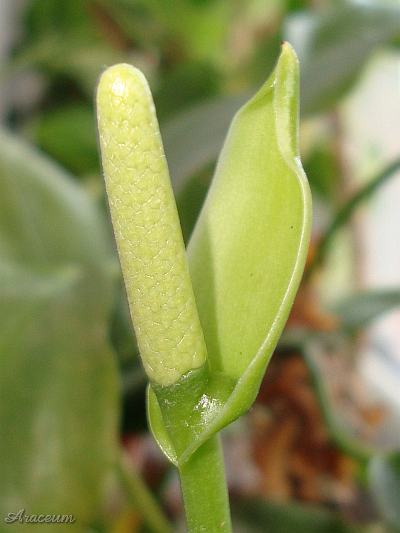 |  |
 | 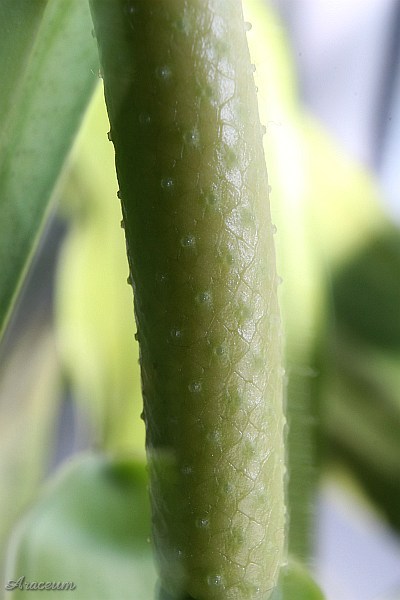 |
Drops appearing on the stigmata indicate the female anthesis, they are ready to receive pollen.
Flowers in the Araceae family are protogynous. |
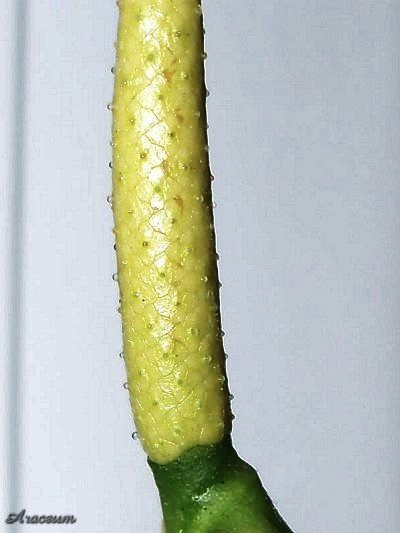 | 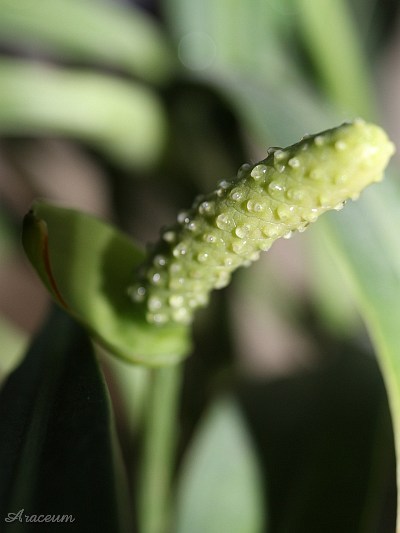 |
 |  |
| The whole spadix consists of fertile flowers. |
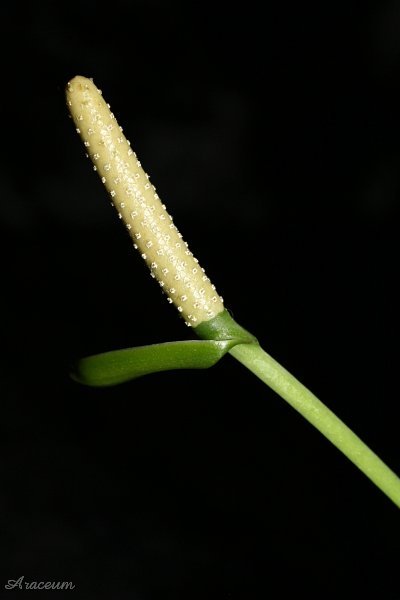 |  |
| A few days after the male anthesis begins, the stamens appear and produce pollen. |
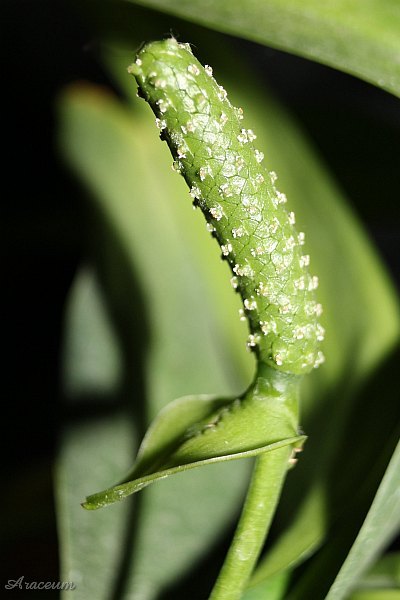 | 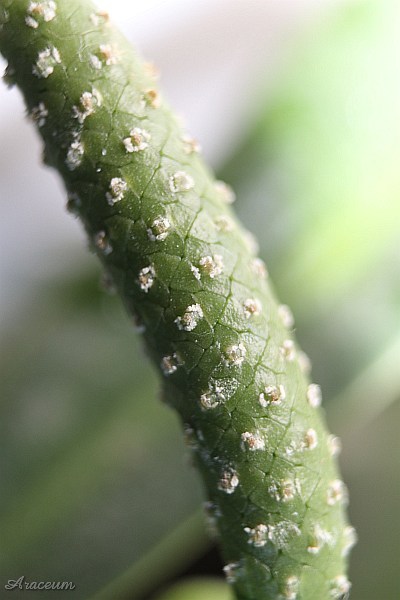 |
 | 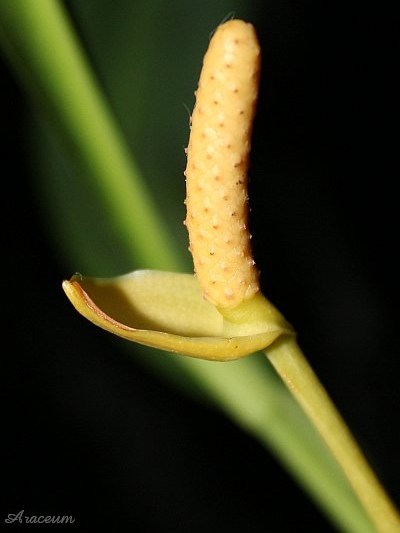 |
Pollinated inflorescences thicken and become green.
The spathe remains green until the fruits are ripe. | Non-pollinated ones become yellow and wither. |
 |  |
| The ripening fruits gradually become red, the infructescence still increases its size. |
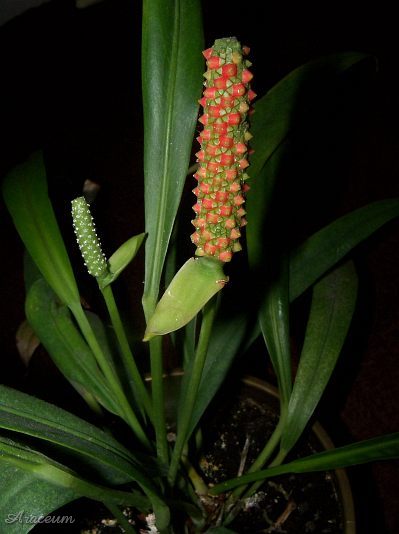 |  |
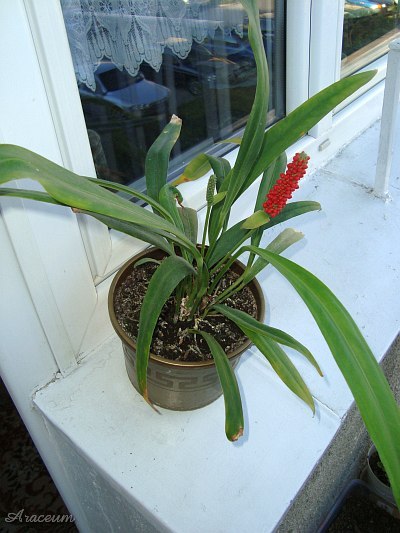 | 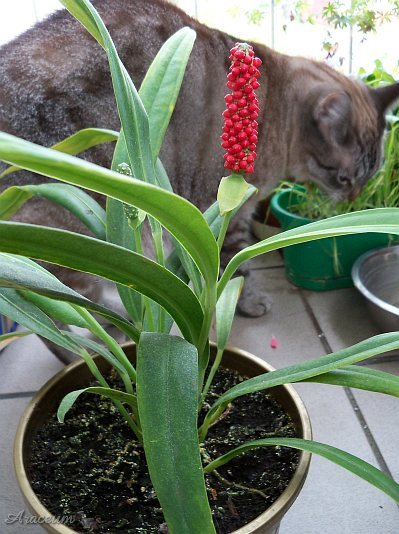 |
 |  |
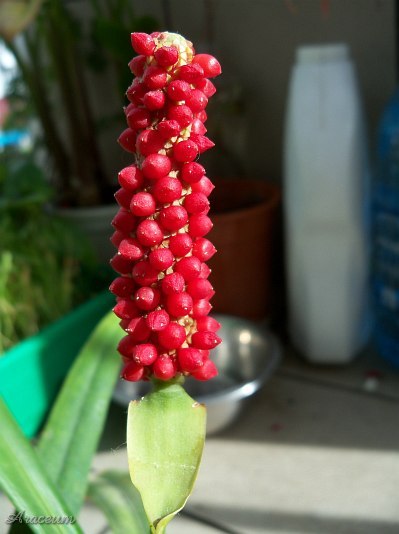 | 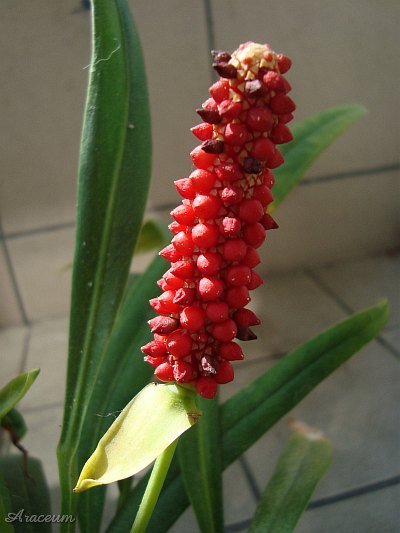 |
| The seeds are mature, it's harvest time - the spathe becomes yellow. |
 |  |
|
| The "naked" spadix after removing the fruits. |
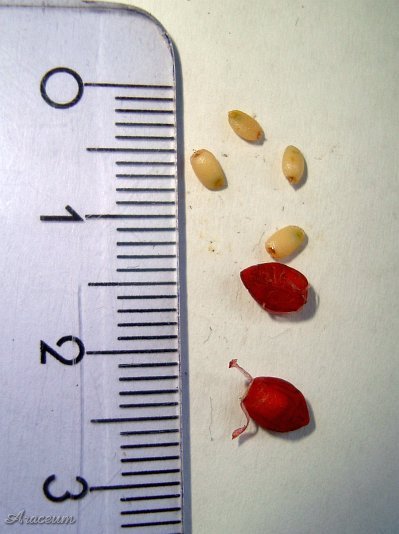 |  |
| There are up to 4 seeds in each fruit. | Seeds collected from one infructescence and immediately sown. |
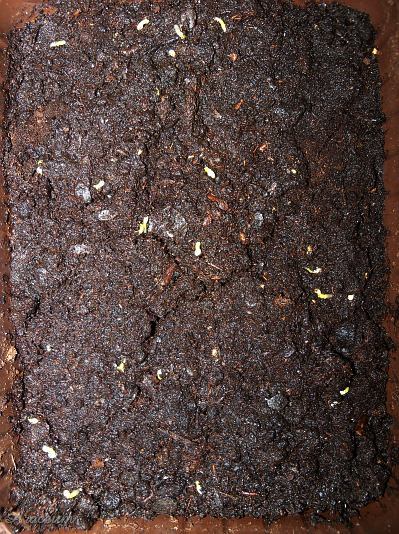 |  |
| They germinate after about 2 weeks. |
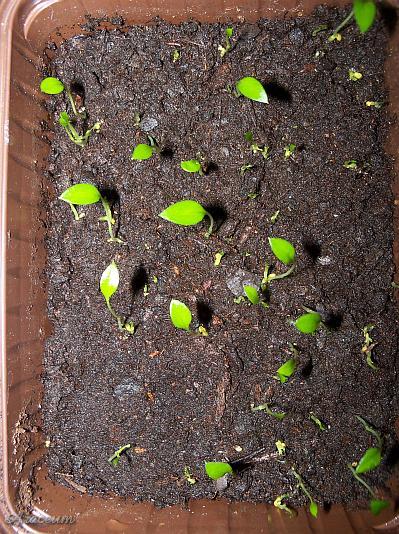 |  |
3-4 weeks later the first leaves appear.
Photos in this page (unless specified otherwise) © Marek Argent. |
















































